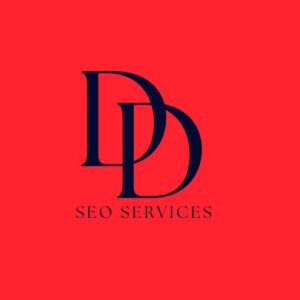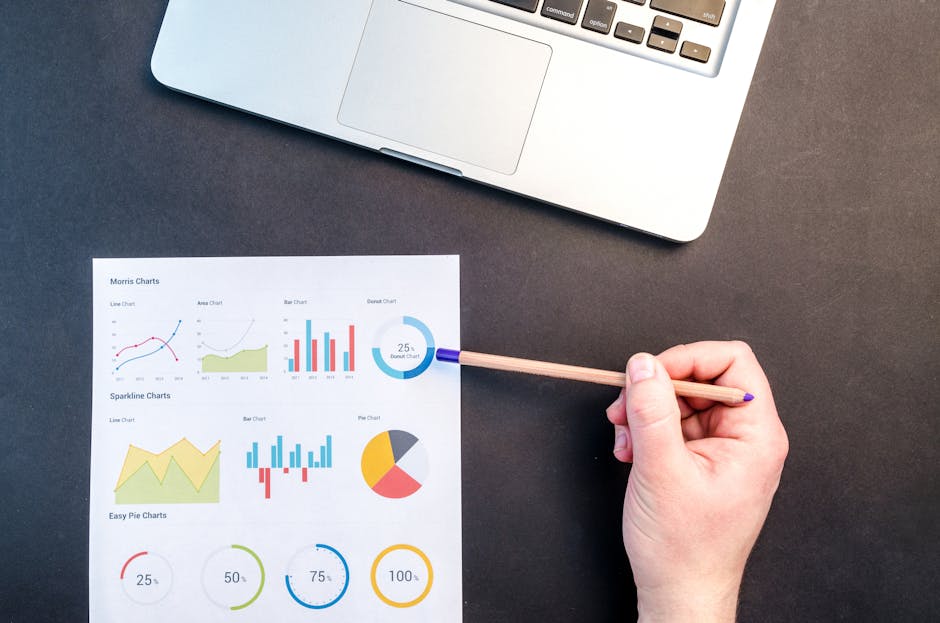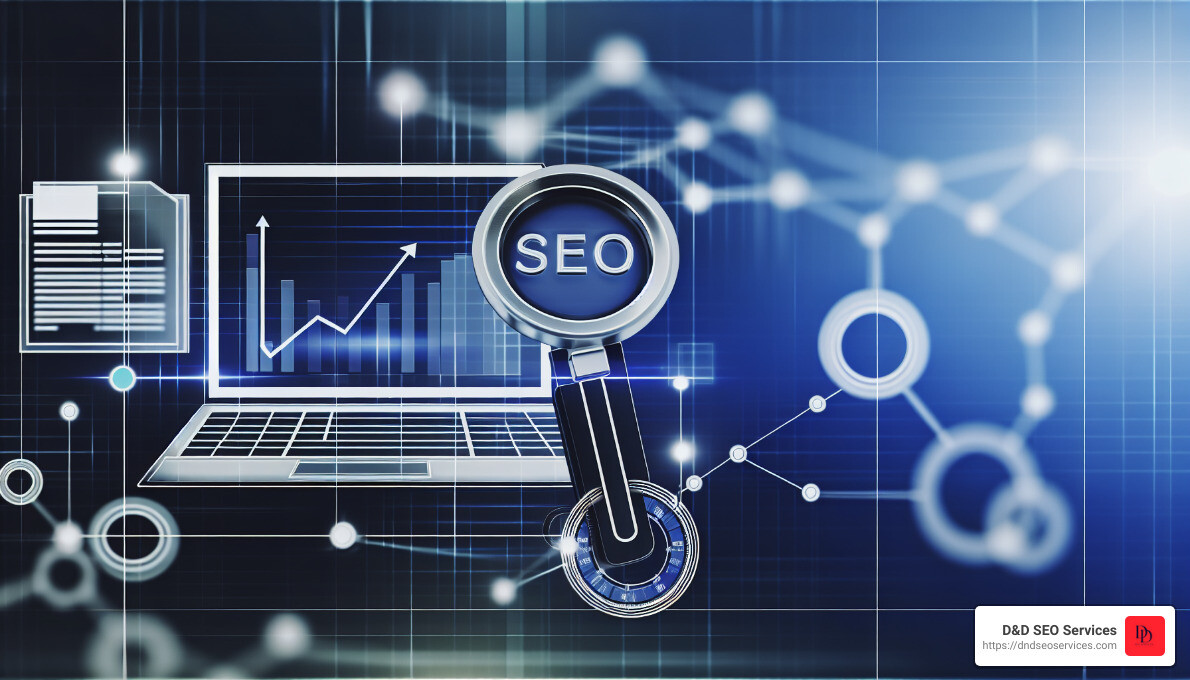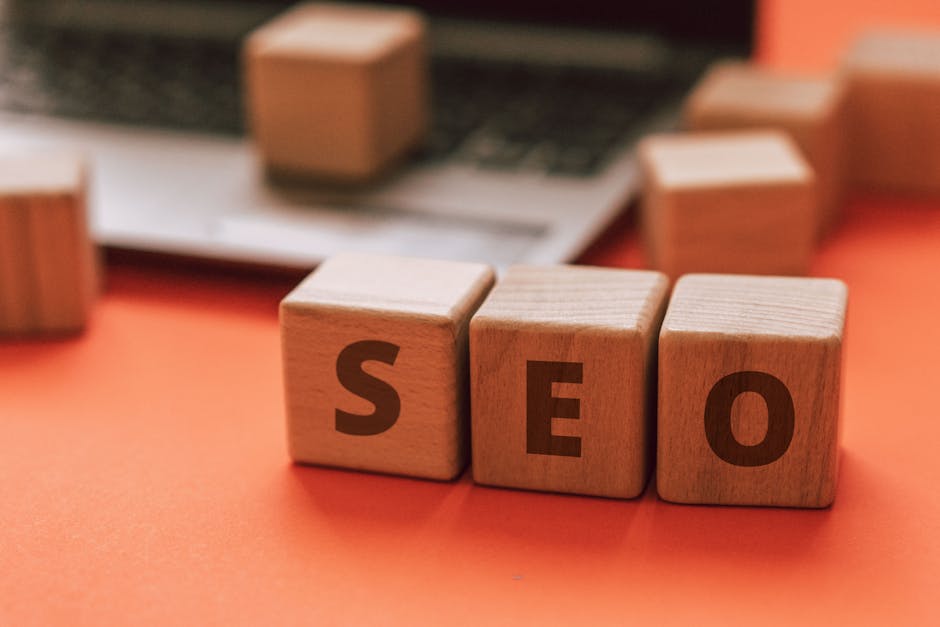SEO funnels represent the journey your website visitors take from finding your site to becoming loyal customers. Think of it as a roadmap guiding visitors through stages that ultimately lead to conversion.
Understanding SEO funnels is crucial for maximizing your online presence and improving your sales. Each stage, from catching a visitor’s attention to securing their purchase, plays a vital role. By optimizing content and strategy at every step, you ensure a smooth and engaging search journey for users.
For local business owners, getting this right can mean increased foot traffic and online visibility, key factors in boosting revenue.
Easy seo funnels glossary:
Understanding the SEO Funnel
Let’s break down the SEO funnel into its five key stages: Crawl, Render, Index, Rank, and Convert. Each stage is crucial in moving website visitors from findy to action.
Crawl: The First Step
Before your content can shine in search results, it must be finded. This is where search engine bots, like Googlebot and Bingbot, come into play. These bots “crawl” your website, exploring your pages to understand what they’re about.
Think of crawling as a digital librarian checking out new books. If a page isn’t crawled, it won’t make it into the library’s catalog—or in this case, the search engine’s index.
Key Tip: Ensure your site is easy to steer with a clear structure and a sitemap. This helps bots find all your important pages.
Render: The Second Step
Once a page is crawled, search engines need to “render” it. This means processing the page’s content, including any JavaScript, to see what users would see.
Rendering is like unwrapping a gift. You need to see the full content to decide its value. However, search engines have a render budget, so not all pages are rendered immediately.
Quick Fact: Google’s Martin Splitt mentions that rendering and indexing are getting faster as technology improves. But for now, make sure critical content isn’t hidden behind complex scripts.
Index: The Third Step
After rendering, pages are added to the search engine’s “index.” This is like adding a book to a library shelf, making it available for people to find.
Being indexed means your page can appear in search results. But not all pages make it to this stage. If a page is missing key signals, like relevant content or proper tags, it might be left out.
Pro Tip: Use descriptive meta tags and ensure your content is relevant and informative to boost your indexing chances.
Rank: The Fourth Step
Ranking is where the magic happens. When someone searches for something online, search engines use complex algorithms to determine which indexed pages appear first.
Ranking is like a popularity contest. Pages that are more relevant, authoritative, and user-friendly get the top spots.
Did You Know? Google’s algorithm considers over 200 factors, including keywords and user experience, to rank pages.
Convert: The Fifth Step
The final stage is all about conversion. This is where visitors take the desired action, like making a purchase or signing up for a newsletter.
Conversion is the ultimate goal of the SEO funnel. It’s the payoff for all the hard work in the previous stages.
Conversion Tip: Use clear calls-to-action (CTAs) and optimize your landing pages to encourage visitors to take the next step.
By understanding and optimizing each stage of the SEO funnel, you can guide your visitors smoothly from findy to action, enhancing both user experience and your site’s performance.
Next, we’ll explore how to optimize content for each funnel stage to maximize effectiveness.
Stages of the SEO Funnel
Crawl: The First Step
Before your content can shine in search results, it must be finded. This is where search engine bots, like Googlebot and Bingbot, come into play. These bots “crawl” your website, exploring your pages to understand what they’re about.
Think of crawling as a digital librarian checking out new books. If a page isn’t crawled, it won’t make it into the library’s catalog—or in this case, the search engine’s index.
Key Tip: Ensure your site is easy to steer with a clear structure and a sitemap. This helps bots find all your important pages.
Render: The Second Step
Once a page is crawled, search engines need to “render” it. This means processing the page’s content, including any JavaScript, to see what users would see.
Rendering is like unwrapping a gift. You need to see the full content to decide its value. However, search engines have a render budget, so not all pages are rendered immediately.
Quick Fact: Google’s Martin Splitt mentions that rendering and indexing are getting faster as technology improves. But for now, make sure critical content isn’t hidden behind complex scripts.
Index: The Third Step
After rendering, pages are added to the search engine’s “index.” This is like adding a book to a library shelf, making it available for people to find.
Being indexed means your page can appear in search results. But not all pages make it to this stage. If a page is missing key signals, like relevant content or proper tags, it might be left out.
Pro Tip: Use descriptive meta tags and ensure your content is relevant and informative to boost your indexing chances.
Rank: The Fourth Step
Ranking is where the magic happens. When someone searches for something online, search engines use complex algorithms to determine which indexed pages appear first.
Ranking is like a popularity contest. Pages that are more relevant, authoritative, and user-friendly get the top spots.
Did You Know? Google’s algorithm considers over 200 factors, including keywords and user experience, to rank pages.
Convert: The Fifth Step
The final stage is all about conversion. This is where visitors take the desired action, like making a purchase or signing up for a newsletter.
Conversion is the ultimate goal of the SEO funnel. It’s the payoff for all the hard work in the previous stages.
Conversion Tip: Use clear calls-to-action (CTAs) and optimize your landing pages to encourage visitors to take the next step.
By understanding and optimizing each stage of the SEO funnel, you can guide your visitors smoothly from findy to action, enhancing both user experience and your site’s performance.
Next, we’ll explore how to optimize content for each funnel stage to maximize effectiveness.
Optimizing Content for Each Funnel Stage
Creating content for your SEO funnel is like crafting a journey for your visitors. Each stage—awareness, evaluation, and conversion—requires a different approach. Let’s break it down:
Awareness: Capturing Interest
At the top of the funnel, the goal is to grab attention. Visitors here are just starting to explore their options. They might not even know exactly what they need yet.
Content Strategy:
- Broad Topics: Create content that answers common questions or addresses general problems. Think blog posts, infographics, or videos that introduce your industry or product category.
- Head Keywords: Use broad, high-traffic keywords. These are often 1-2 words long and help capture a wide audience. For example, “camping tents” instead of “lightweight hiking tents.”
- Engaging Formats: Use visuals and interactive content to make your material more engaging and shareable. This increases the chances of attracting visitors from social media or search engines.
Example: A blog post titled “Top 10 Camping Essentials” can attract those just beginning their camping journey.
Evaluation: Providing Value
In the middle of the funnel, visitors are comparing options. They’re looking for detailed information to help them make a decision.
Content Strategy:
- In-Depth Guides: Offer detailed comparisons or reviews. Content like “How to Choose a Tent for Your Next Trip” helps visitors evaluate their choices.
- Long-Tail Keywords: Focus on specific, intent-driven keywords. These are usually longer phrases that indicate the visitor is closer to making a decision, like “best waterproof tent for hiking.”
- EAT Content: Ensure your content is expert, authoritative, and trustworthy. This builds credibility and helps in ranking better on search engines.
Example: A comparison guide titled “Best Lightweight Tents for Backpacking” can assist those who are narrowing down their options.
Conversion: Sealing the Deal
At the bottom of the funnel, visitors are ready to act. They just need a little nudge to make the final decision.
Content Strategy:
- Clear CTAs: Use strong calls-to-action that guide the visitor to take the next step, whether it’s buying a product or signing up for a service.
- Product Pages: Ensure these pages are optimized with detailed descriptions, customer reviews, and easy navigation.
- Targeted Keywords: Use keywords that reflect buying intent, like “buy lightweight hiking tent online.”
Example: A product page with a detailed review and a “Buy Now” button can convert visitors who are ready to purchase.
By tailoring your content to each stage of the SEO funnel, you can effectively guide visitors from findy to decision, improving both user experience and conversion rates.
Next, we’ll dive into some frequently asked questions about SEO funnels.
Frequently Asked Questions about SEO Funnels
What are SEO funnels?
An SEO funnel is a strategic framework that guides website visitors through their journey from findy to conversion. It’s designed to capture and convert organic traffic by aligning content with the different stages of the customer journey. This funnel helps businesses understand how potential customers interact with their content at various points, allowing for targeted optimizations that improve user experience and drive conversions. By focusing on how users search and interact online, businesses can create a seamless journey that not only attracts but also retains visitors.
What is the top funnel in SEO?
The top of the funnel in SEO is all about brand recognition and awareness. At this stage, potential customers are just beginning their search for information. They might not be ready to buy yet, but they’re looking for answers to broad questions or exploring options. Content here should be engaging and informative, using broad keywords to capture a wide audience. Think of blog posts, educational videos, and infographics that introduce key topics in your industry. The goal is to make a strong first impression and establish your brand as a trusted source of information.
What are the four types of SEO?
To effectively guide users through the SEO funnel, it’s important to leverage the four main types of SEO:
- On-Page SEO: This involves optimizing individual web pages to rank higher and earn more relevant traffic. It includes elements like content quality, keyword usage, and meta tags.
- Off-Page SEO: Focused on building your site’s authority through backlinks and social media engagement. It’s about getting other websites to vouch for your content’s quality and relevance.
- Local SEO: Essential for businesses that operate in specific geographic areas. It helps improve visibility in local search results, ensuring that local customers can find you easily.
- Technical SEO: This type ensures that your site meets the technical requirements of search engines. It involves optimizing site speed, mobile-friendliness, and crawlability.
Each type of SEO plays a crucial role in enhancing your website’s visibility and user experience, making it easier for potential customers to find and engage with your content.
Next, we’ll explore how these strategies fit into the broader picture of content optimization for each funnel stage.
Conclusion
At D&D SEO Services, we believe in the power of SEO funnels to transform your digital presence and drive business growth. Our approach combines AI-powered tools with proven SEO strategies to optimize local search results and automate lead management, ensuring your business stands out in the crowded online marketplace.
Local SEO is at the heart of what we do. We understand that for many businesses, capturing local audiences is key to success. Our strategies are designed to improve your visibility in local search results, making it easier for potential customers in your area to find and engage with you.
By integrating AI into our SEO processes, we can analyze search trends and user behavior with unprecedented accuracy. This allows us to tailor our strategies to the unique needs of your business, ensuring you not only reach your target audience but also convert them into loyal customers.
Our commitment to using the latest technology and data-driven insights means we’re always at the forefront of SEO innovation. Whether you’re a small local business or a larger company aiming for national reach, we have the tools and expertise to help you achieve your goals.
Ready to see how our AI-driven SEO services can lift your business? Explore our case studies to find the impact our strategies have had on businesses like yours. Let’s work together to open up the full potential of your online presence.








